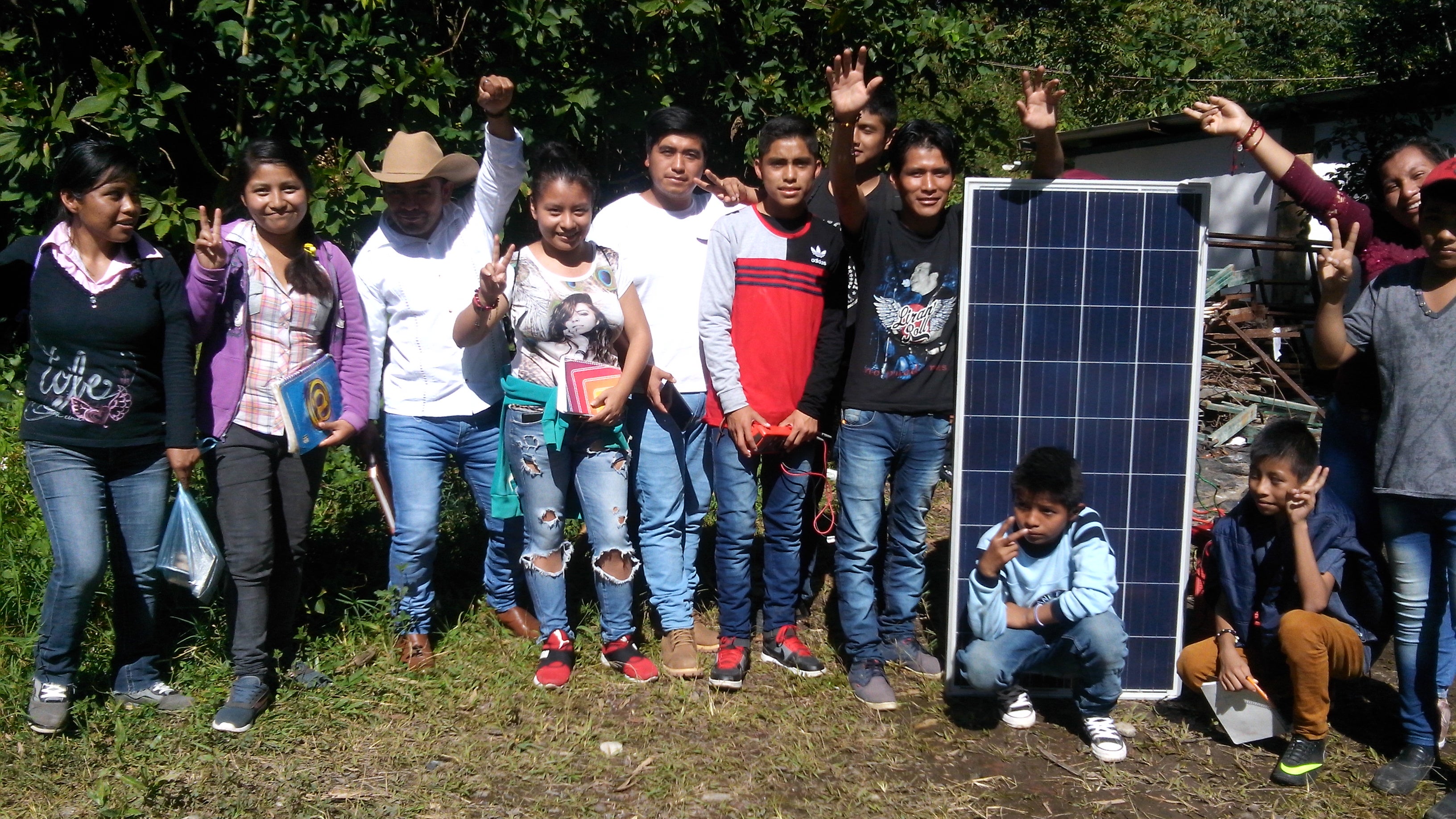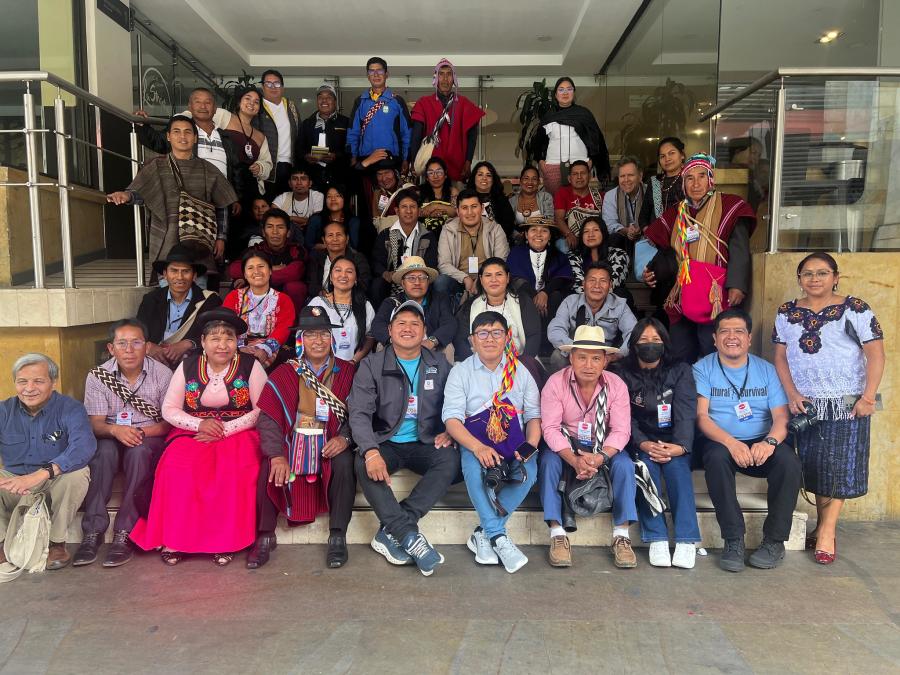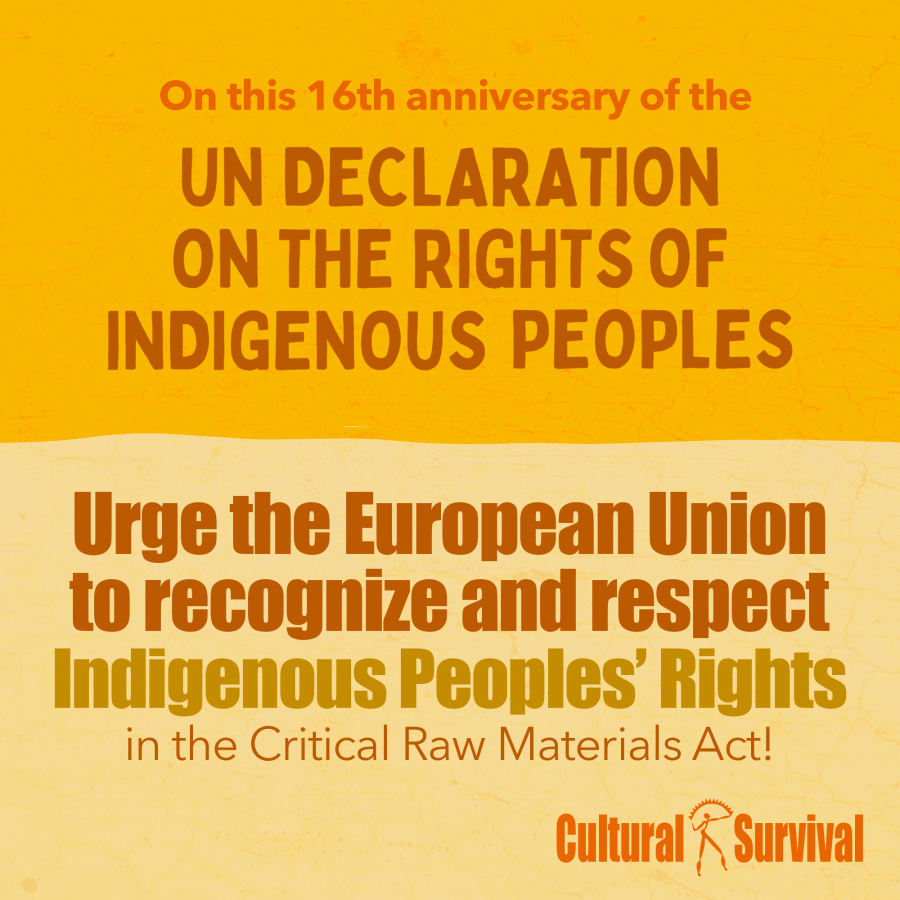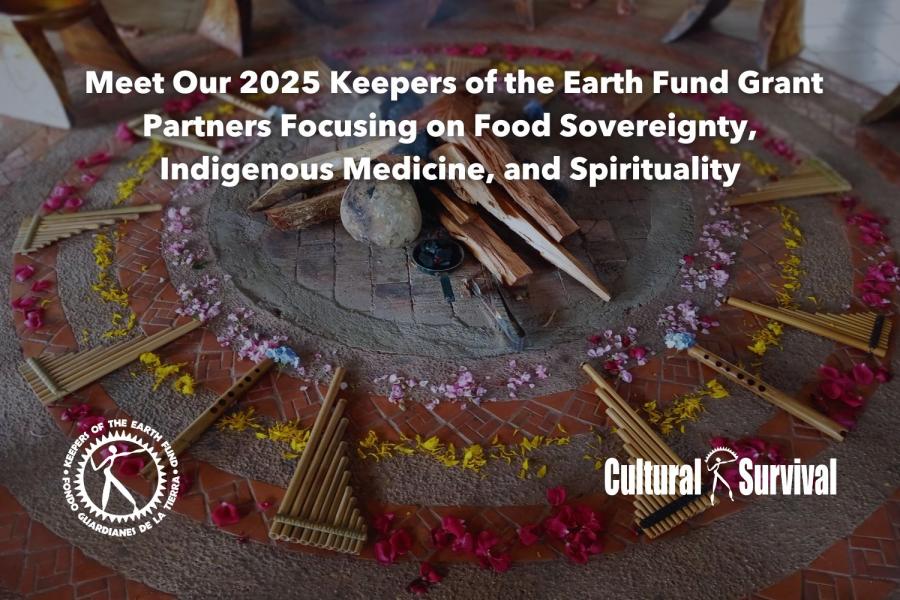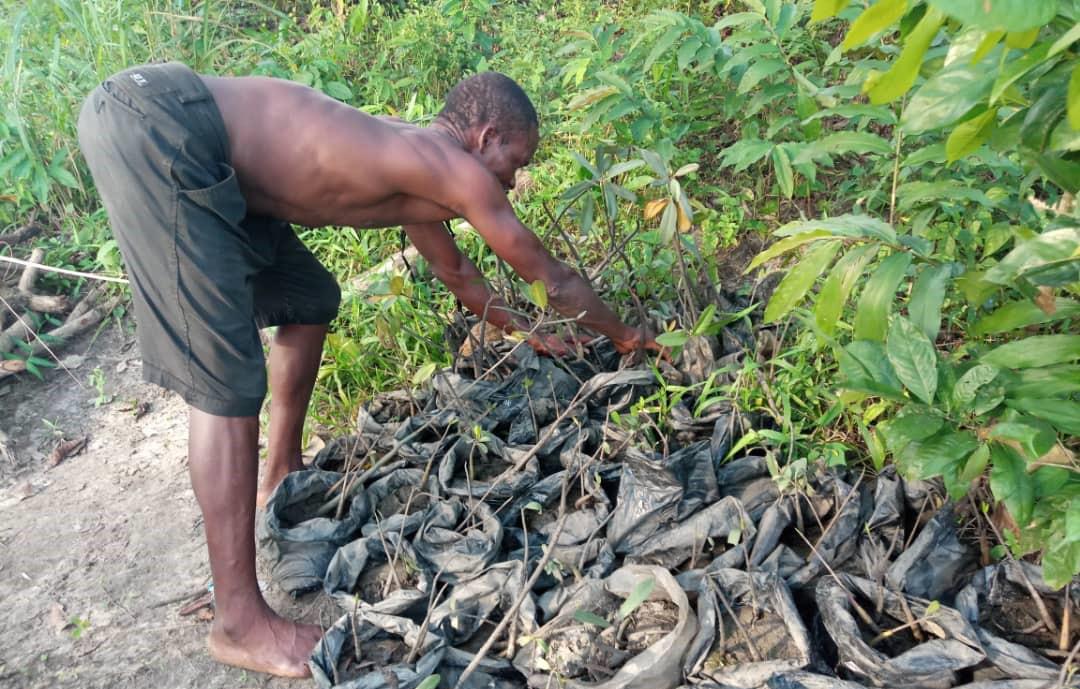
By Bia’ni Madsa’ Juárez López (Ayuuk ja’ay and Binnizá, CS Staff) and Jess Cherofsky (CS Staff)
“In our territories, we want to improve life and maintain ecological equilibrium to protect Indigenous communities and renew the commitment of all to Mother Earth and the life of the planet.” - Sub-Committee Tsimane’ of the Yacuma Sector (Pueblo Tsimane’, Bolivia) in their Keepers of the Earth Fund grant proposal
“Climate change” is the term most used to describe global warming and other climatic and ecological changes that have occurred as a result of anthropogenic actions which have disrupted ecological, social, and cultural balances and have caused the global crisis our planet faces today. The United Nations describes climate change’s many effects, such as the rise of the average global temperature, melting glaciers, sea level rise, changes in wet and dry seasons, and countless other changes that, in some cases, are common across broad swaths of the globe and, in others, exist in very specific places.
The effects of climate change have been measured by various studies globally and have been demonstrated through both small- and large-scale cases. At the international level, countries have analyzed the issue and pushed for efforts to reduce the negative impacts and adapt to new realities. The 1997 Kyoto Protocol, ultimately signed by 192 countries, was a landmark international agreement committing industrialized nations to reduce emissions in an effort to mitigate climate change. It is one of the primary examples of such efforts, but it also exemplifies failures in implementation, as states have prioritized the economy over environmental and social implications.
Indigenous Peoples globally have been among the most strongly impacted and the most vulnerable in face of the increasingly changing climate, whose repercussions, according to scientists, will only become more catastrophic. Yet at the same time, Indigenous Peoples are among the groups who have contributed the least to the roots of the catastrophe. Although Indigenous communities are deeply affected by the climate crisis, they are often excluded from the discussion, leaving out both their concerns and expertise. Discussions of climate change often use academic terms like “climate change,” “climatic crisis,” and “global warming.” It must be taken into account that these concepts have no direct translation in Indigenous languages, and the perception of “global” may vary from one Indigenous community’s worldview to the next.
Although Indigenous communities do not always use academic language to discuss climate change, many communities’ livelihoods are defined by the close relationships with their surroundings, environmental awareness, and understanding of the ecological and weather-related patterns of their territories. This has led them to recognize that Mother Earth is suffering from changes that affect the planet, the animals, and the people that rely on her. As the Zapatistas described in 2017 at their meeting ConCIENCIAS (Consciousness/with science), “...because even if we know when to plant seeds, changes in the climate have made so we can no longer recognize the signs… What some call the ancestral knowledge of Indigenous Peoples now faces a world that they do not understand and don’t recognize. The Zapatistas realize that they need scientific knowledge [to understand these new climatic patterns].”
Cultural Survival invited our grant partners from the 2021 Keepers of the Earth Fund cohort to share their understandings of climate change, what impacts they have observed and experienced in their communities, and how the projects that Cultural Survival is supporting are mitigating the impacts. Their answers were diverse but with many common threads, including innumerable ecological, social, and cultural impacts, and it is essential to include them in the international dialogue on local realities caused by climate change. These perspectives, in addition to highlighting different facets of climate change in different places and ecosystems, also bring attention to the knowledge of Indigenous Peoples, which is based on reciprocal relationships and continuous engagement with the Earth, plants, animals, and environmental patterns since time immemorial. Despite geographic and climatic differences, many communities have shared experiences. This article presents some of the responses and examples that represent the group, although we could not include them all. Our partners make it clear that what many people in international spheres consider environmentalism, Indigenous Peoples see as land defense, as Mixe writer and activist Yásnaya Elena Aguilar Gil explains, communities strive to achieve on a daily basis through defense and exercise of their fundamental rights and responsibilities.
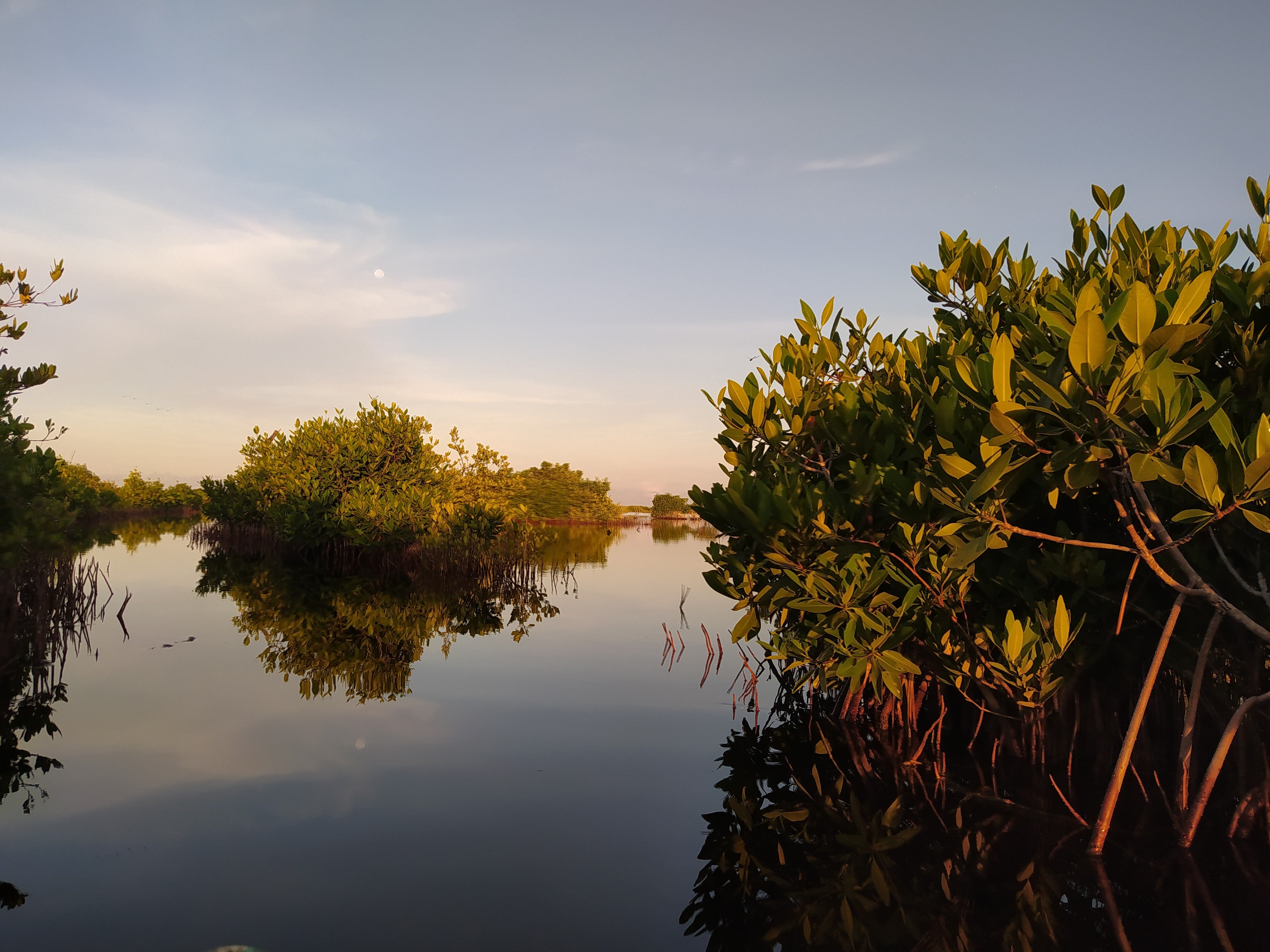
A 16-year-old mangrove forest was restored by Maya communities in Campeche, Mexico. Photo by Bia’ni Madsa’ Juárez López.
“Now it is difficult to predict…”
For the many Indigenous communities who depend on the land for their livelihoods, it is crucial to be able to predict the weather and determine when to plant, harvest, hunt, and carry out other practices and traditions throughout the seasons. Indigenous Peoples have ancient and detailed knowledge of their lands, which is passed from generation to generation and is adapted as it is replicated and learned. However, climate change is causing abrupt changes that do not fit with longstanding patterns. “The rainy seasons have changed, and now it is difficult for the elders to predict. The timings of planting and harvesting corn have undoubtedly changed,” the Campesino Center for Comprehensive Guidance and Training (Binnizá People) in México, shares.
Tlalij, Yolojtli uan Nemililistlij of México (Nahua and Tenek People) shares that “the planting, working, and harvesting calendars have changed, which causes us to be unprepared for changes and lose harvests because the rain has passed or we plant too early when there is still a drought. Overall, our harvests have become less due to miscalculations.” Similarly, the Federation of Native Maijuna Communities of Peru explains that “during these last decades, we have directly experienced the consequences of climate change. The rains and floods in our ancestral lands now occur at different times and aren’t as predictable as in the past. This has directly impacted our traditional agricultural system, as well as when and where we can fish and hunt, which has, finally, affected our ability to feed our families. We are very worried about what this all means for our future.”
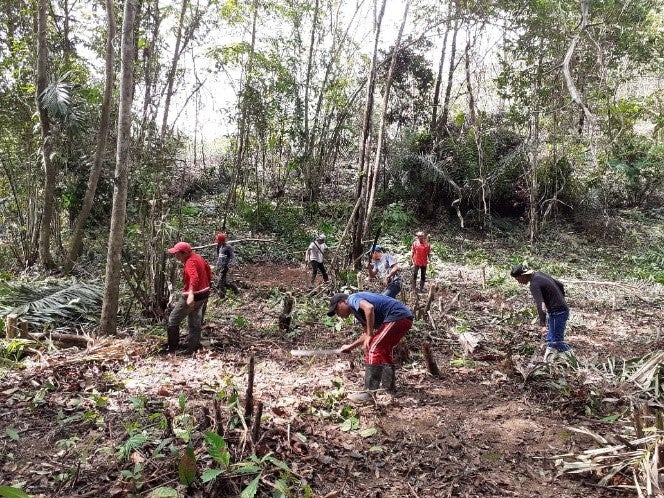
Guna people in Panamá, working on their agroforestry project. Photo by CENDAH.
“The impacts of climate change have strongly affected our harvests”
It’s not only a question of correctly predicting the weather; the changes in the seasons bring myriad changes and damages, as the Otomí Community of La Vega in Mexico shares: “We are located in a semiarid region that is characterized by a lack of rainwater. However, in the last few years, this problem has heightened due to climate change provoking longer dry periods and damages to harvests and production of food. Added to this, we notice a decrease in local vegetation coverage.” Moreover, the Santa Rosa Community (Qom) in Paraguay explains that “the impacts of climate change have strongly affected the crops of families, who then lose their family livelihoods. The seasons have changed immensely [and] it’s not like it was before; the heat is stronger due to the industrial agriculture of genetically modified eucalyptus, soy, and corn, the cutting down of our forests, and industrial ranching. The dry periods are also more severe, high-intensity fires have increased, the violent storms rip the roofs off of families’ [houses], and floods have become more aggressive...”
The organization Nepal Majhi Mahila Utthan Sangh (Majhi) in Nepal says that climate and seasonal changes have hit agricultural communities, whose resiliency has diminished in recent years due to the implementation of crop monocultures, which make them more dependent on the limited crops they do have and less able to adapt when a crop fails and there are none to supplement or replace it. In the case of this community, it is dry periods that have challenged their crops, and they report that this results in the need to seek other sources of livelihoods “or most likely [results in] increased poverty.” It is important to highlight that, of the approximately 40 organizations whose data were included in this analysis, about 80 percent emphasize problems related to water, whether they be flood, droughts, contamination, the melting of glaciers, acidification, and other crises that are endangering the survival of these Indigenous Peoples and entire ecosystems.
The Sacred Jungle Foundation in Ecuador (Shuar and Achuar) explains, “Climate change provoked by the increase in global temperatures has triggered multiple negative effects in the Shuar territory. These effects, in turn, are interrelated with each other, increasing their violent impacts, which puts at grave risk the species and biodiversity that live in the region...including human beings. In the last decade, there were massive floods that swept away many species of fauna and crops (orchards). Moreover, there have been very prolonged dry periods and winters, and as a result, families have lost many medicinal and edible species due to permanent [territorial] displacement. In the face of these negative impacts, [with the current project], the restoration and planting of ancestral organic gardens on stable lands outside the flood zone is an adequate strategy to adapt to climate change. Also, not creating food dependence and using only resources from the forest contributes to the communities’ socioecological resilience...In addition, with our own efforts and resources, 10 long-term greenhouses will be established with Amazonian forest species that will serve to reforest and restore disturbed or degraded ecosystems; and this activity is also an effective technique to mitigate climate change.”
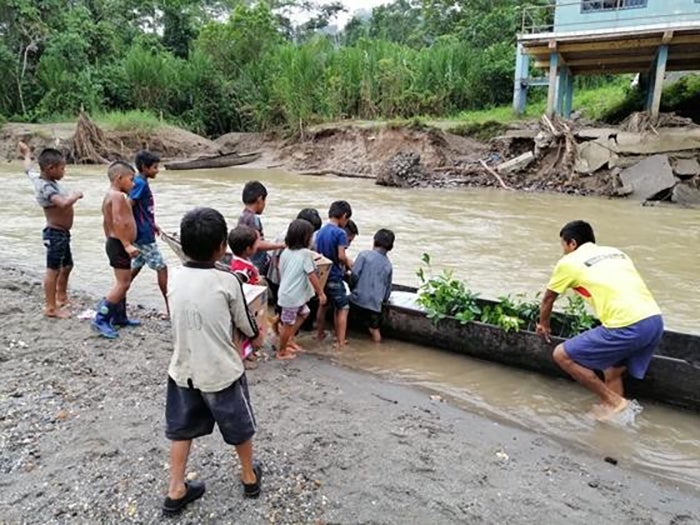
Members of CONAIE transporting medicinal plants to communities the river in the Ecuadorian Amazon. Photo by CONAIE.
“Community members have had to leave their community”
Ecology is not separate from society, and the ecological effects of climate change extend to the social and economic lives of Indigenous communities, with harsh consequences that transcend borders. Communities in Mexico, Guatemala, Nepal, and Brazil report an increase in migration because, largely due to impacts on agriculture, the communities can no longer support themselves on their lands (Povo Karão Jaguaribaras Association; Nim Poqom Reflections Center; La Vega Community, Otomí; & Nepal Majhi Mahila Utthan Sangh).
The Nim Poqom Reflections Center (Maya Poqomchi and Q’eqchi’) says, “Migration has increased because community members have had to leave their community to be able to provide food and resources to their families.” “Climate refugees” or “climate-displaced Peoples” are recently coined terms used to describe the millions of people who have been forced to migrate from their lands as a result of the conditions that climatic changes have imposed upon their ways of life. According to the Internal Displacement Monitoring Centre’s 2021 global report, “disasters related to climate displaced 30.7 million people” worldwide in 2020.
Makxtum Kgalhaw Chuchutsipi (Tutunakú), a KOEF grant partner from Puebla, Mexico, is working to secure alternative energy production such as solar panels, as part of their strategy to reach energy sovereignty. Photo by Makxtum Kgalhaw Chuchutsipi.
Community responses in the face of climate change
Indigenous Peoples find themselves in a constant state of resiliency as they develop alternative solutions to these problems. They are on the front lines of a disaster of unprecedented scale. Cultural Survival has had the honor of contributing in some way to their efforts, financing dozens of projects that address the problems caused by climate change and which are themselves measures that help to prevent, or mitigate future changes. At times the connection between these projects and climate change is explicit, and other times it is less so, but each project is directly or indirectly related to this global phenomenon. It is extremely important to understand the efforts undertaken by Indigenous Peoples and communities as a fundamental part of the response to climate change, and it is necessary to support them because these communities are the ones who hold deep, place-based knowledge of their territories. This knowledge encompasses both how conditions were before and how they have changed, and it informs the development of ecologically and culturally appropriate solutions.
Indigenous communities develop and implement projects to protect their people and their lands because of the strong, ancient relationships of respect, reciprocity, responsibility, and balance that exist between them. The projects are holistic and based on communities’ own self-determination, in accordance with ancestral knowledge that is adapted to new contexts. Another way of understanding responses to climate change includes a common framework used among scientific and political communities, which classify responses into two categories: mitigation responses and adaptation responses. At its most basic level, adaptation targets the effects already underway, while mitigation targets the causes at the root of climate change. Adaptation aims to help society adjust to the new reality with changes to practices, alternative systems, and new knowledge. Mitigation, on the other hand, seeks to prevent the exacerbation of the crisis. Since these categories are important within the global dialogue, we analyzed our partners’ projects in this context as a lens through which to understand these grassroots projects as responses to the global crisis. The projects fit into both categories and, because of their holistic nature, many serve both strategies at the same time. See the table at the end of the article for a summary of actions and what types of responses they are in the communities Cultural Survival is funding.
The Munduruku Institute of Brazil’s project (Munduruku, Apiaká, and Kayabi) “will contribute to reducing deforestation, since we have technology that will facilitate the reuse of wood that is already on the ground.” Deforestation at a global scale is strongly related to climate change. Trees, in addition to being the habitat of numerous animals, plants, and fungi, are responsible for humidity and rains and help reduce heat and retain water in ecosystems. Once a forest is cut down, equilibrium is interrupted and rain patterns change, establishing a cycle that makes it difficult for the forest to recuperate. The Federation of Native Mijuna Communities of Peru says, “Supporting us in our fight to conserve the [Regional Conservation area of Mijuna-Kichwa, which is made up of 391,000 hectares of our ancestral territory] is fundamental from the perspective of climate change. Investigators have identified the area as an extremely high carbon reserve, which makes the area a carbon sink of critical importance in a world that becomes increasingly more concerned and impacted by climate change. If this road project continues against our wishes, it would irreversibly alter the ecological fabric of an area that currently has no roads, and it would destroy thousands of acres of forests that sequester carbon.” Although communities may not self-identify their projects as “climate change mitigation,” they clearly are that, and the protection of forests has impacts that reverberate across the world in the fight to slow climate change.
The Yurok Nation in the western United States is witnessing the devastating loss of salmon—fish that “since the beginning of time [have…] been provided to us by the Klamath River,” says the Yurok Tribe Environmental Program (YTEP) Food Sovereignty Division. Although they continue fighting for the salmon, the community is also focusing on other traditional foods, like acorns and other nuts, berries, and mushrooms. The project that Cultural Survival supports includes creating maps to guide cultural burns in native oak tree groves. Such burns contribute to the production of nuts and help prevent the establishment of invasive species and the spreading of diseases and insects that can damage the oaks. Cultural burns also assist in preventing massive uncontrollable fires, since they burn fuel materials under carefully managed conditions. These fires are a traditional practice, but the colonizing US government made them illegal. As a result, “Every year, Yurok families are displaced from their homes, made to breathe unsafe air, and lose access to power in their homes due to fires. Catastrophic fires leave destroyed forests, creating a perfect breeding ground for invasive plant species that repopulate the area faster than native species can reestablish,” the Yurok Tribe Environmental Program (YTEP) Food Sovereignty Division reports. Thus, the creation of maps that will help with cultural burns is not only a step for the Yurok Nation in strengthening their food autonomy and security based on their relationships with native and traditional plants but also strengthens a traditional practice that helps them combat the fires that are causing destruction across the Pacific Coast.
The Cultural and Environmental Committee of the Community Council of Barú, Colombia (Afrodescendant community), explains that their community is suffering the impacts of climate change, which is “significantly affecting native forests and accelerating the shortage of rainwater and the deterioration of the coastal marine ecosystem. Among these are mangroves, which are of vital importance given that they serve as a natural protective barrier along the whole coast and in internal lagoons...[and] provide fundamental ecosystemic services for the community.” Their project “seeks to promote the empowerment of the community related to the protection of the mangrove ecosystem, which is key to this process. Similarly, with the construction of a greenhouse [of mangroves] which subsequently would be replanted in the most affected areas, we would establish a process that seeks to mitigate the impacts generated by climate change while also improving the adaptation of our community in the face of this phenomenon."
This is not the only project related to forest protection, which has infinite benefits for Indigenous Peoples, their territories, and all who live in them. The efforts of Comuna Playa de Oro (Afro-Ecuadorian) in Ecuador also target the protection of the forest and animals, which are facing multiple threats by mining, hunting, and also climate change which, as in other places, are changing the patterns to which the forest ecosystem has adapted. In this case, unlike the Barú project which is undertaking agroforestry measures, the Comuna Playa de Oro project is focused on strengthening community surveillance of the territories so as to protect against resource extraction.
Meanwhile, the San Pedro Jilotepec community in Mexico (Mixe) has undertaken a fight to acquire titles for their territory to better manage it and acquire resources to “conserve, adapt, and mitigate climate change in our most vulnerable ecosystems,” and to produce renewable products and other community-based economic activities. Similarly, the Tsimane’ Sub-Council of the Yacuma Sector of Bolivia (Tsimane’) is working on documenting their ways of life and their traditional territories, as well as conducting trainings on rights so they can use the institutions of their country to ensure continued access to their own lands. They say, “With the project, we will show the relationship of harmonious coexistence that we have always had with nature. That is, the equilibrium related to the use of the land for subsistence crops, hunting, fishing, and the harvesting of fruits and leaves such as jatata to build our homes. “In our territories, we want to improve life and maintain ecological equilibrium to protect Indigenous communities and renew the commitment of all to Mother Earth and the life of the planet.”
Like the Tsimane’ Peoples, other communities understand that their actions benefit beyond just their community or region. For the Hampiriypacha, the Association of Runa Seed and Health Guardians of Ecuador (Kichwa Otavalo), “The project is based on the act of reconnecting people to a worldview that respects nature and thus does not seek to exploit it, but rather, people understand themselves as part of nature and thus sustain nature. The process not only seeks to teach techniques but also to offer an entryway to a life dynamic that is integrated with nature, a way of thinking that is aligned with caring for nature.”
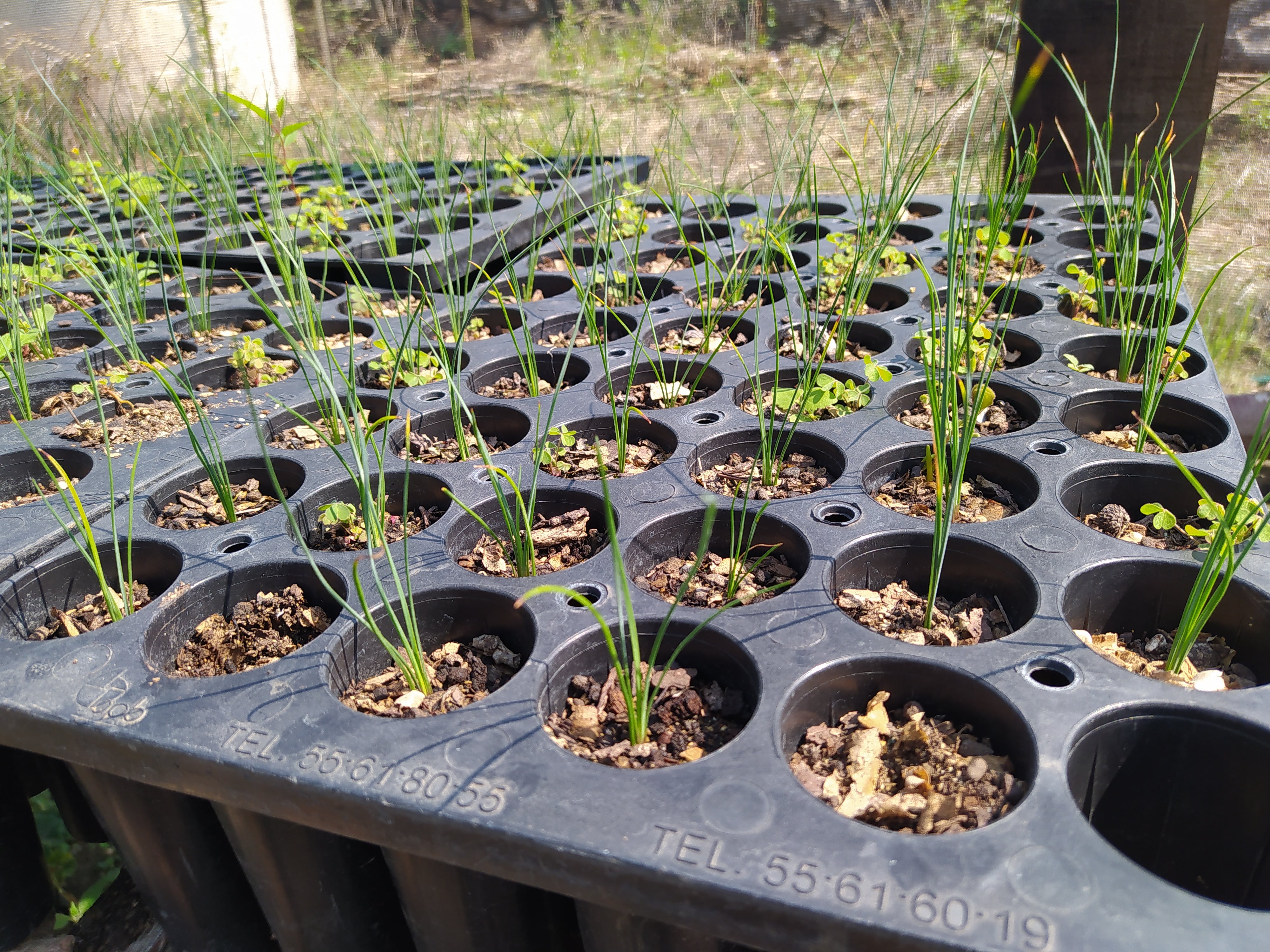
Mixtec youth are working to repopulate culturally important plants in their community in Oaxaca, Mexico.
Conclusions
Indigenous Peoples are on the front lines of climate change. Although communities do not necessarily know one another or share a geographic region, the changes and challenges they face are obvious and there are many overlapping experiences. Although Indigenous Peoples do not bear responsibility for this unprecedented global change, their territories are among the most ecologically and culturally impacted. On top of this, Indigenous rights are routinely violated, and as a result, Indigenous Peoples are required to constantly defend their lands and ancestral lifeways to secure the survival of their communities and all the living beings for whom their territories are home. Thus, the defense of rights and territories is among the most important actions Indigenous Peoples are taking against climate change. Cultural Survival is proud to support over 50 communities and organizations in 17 countries in 2021 that are implementing projects addressing climate change from different angles, both directly and indirectly. We will continue to listen to the voices of communities regarding the best ways we can be in solidarity with their work, which, though undertaken by and for communities, benefits the entire world.
Table 1. - Summary of impacts and actions (mitigation and adaptation) related to climate change in the projects Cultural Survival is funding through the Keepers of the Earth Fund.
|
|
|
|
|
|
|
|
The Keepers of the Earth Fund is an Indigenous Led Fund designed to support Indigenous Peoples’ community development and advocacy projects. Since 2017, KOEF has supported 177 projects in 35 countries totaling $764,317. KOEF provides small grants to grassroots Indigenous-led communities, organizations, and traditional governments to support their self-determined development projects based on their Indigenous values. Predicated on the United Nations Declaration on the Rights of Indigenous Peoples, Cultural Survival uses a rights-based approach in our grantmaking strategies to support grassroots Indigenous solutions through the equitable distribution of resources to Indigenous communities.
Top photo: The Ogoni in the Niger Delta region in Nigeria face threats to their livelihood as the quality of their land depletes and the biodiversity of the local ecosystem deteriorates due to oil and gas extraction on their territories. Their farmlands are less fertile and integral plants are becoming extinct, escalating food insecurity. Through a grant from the Keepers of the Earth Fund (KOEF) to the Lokiaka Community Development Centre, volunteers at Lokiaka worked to replenish the land by conducting two intensive training sessions with Ogoni women. Workshops taught 65 women farmers the skills to start mangrove and fruit tree nurseries and trained 55 women to make fuel-efficient stoves out of clay. Photo by Lokiaka Community Development Centre.
